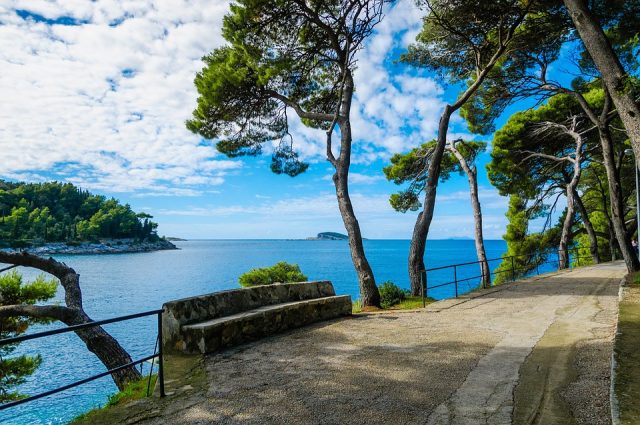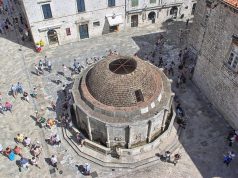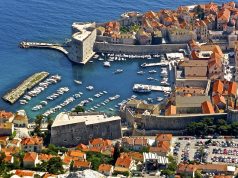
In this article you’ll find related links that will help you to plan the best trip to Split, free coupons save a lot of money on hotels, car rentals, restaurants and attractions in Zagreb, best hotels in Zagreb
Exploring the History and Culture of Zadar: A Guide for Travelers
Situated on the Dalmatian coast of Croatia, Zadar is a city with a rich history and vibrant culture. From its ancient Roman roots to its contemporary art scene, there are countless opportunities for travelers to explore and learn about the city’s unique heritage. Whether you’re interested in architecture, gastronomy, or history, Zadar has something to offer everyone.
History of Zadar
Zadar has a history that spans over 3,000 years, making it one of the oldest cities in Europe. The city was first established by the ancient Liburnians, and later became a Roman colony known as Iadera. The Roman influence can still be seen in the city’s architecture, including the remains of the Roman forum and the Roman aqueduct.
After the fall of the Roman Empire, Zadar came under the rule of the Byzantine Empire, and later the Kingdom of Croatia. Throughout its history, the city has been a center of commerce and culture, and has played a pivotal role in the development of Dalmatia.
In the medieval period, Zadar was an important maritime city, and its wealth and influence can be seen in the form of its historic churches, palaces, and fortifications. The city’s medieval churches, such as the Church of St. Donatus and the Cathedral of St. Anastasia, are prime examples of Zadar’s rich architectural heritage.
During the 20th century, Zadar became part of the newly formed Kingdom of Serbs, Croats, and Slovenes, and later transformed into the Socialist Republic of Croatia within Yugoslavia. After the breakup of Yugoslavia in the 1990s, Zadar became a part of the independent Republic of Croatia.
In recent years, Zadar has experienced a revival, as the city has embraced its past while also looking towards the future. The city is now a popular tourist destination, attracting visitors from around the world who come to explore its historic sites and experience its unique culture.
Culture of Zadar
Zadar is a city that is rich in culture, with a mix of influences from its Roman, Byzantine, and Venetian past. The city is known for its vibrant arts scene, with numerous galleries and museums showcasing contemporary and historical works of art. The Museum of Ancient Glass is particularly notable, as it features an extensive collection of Roman glass artifacts.
Zadar is also known for its unique musical traditions. The city is home to the Sea Organ, an experimental musical instrument that uses the natural movement of the waves to create haunting melodies. The sound of the Sea Organ has become one of Zadar’s most iconic and beloved features, and visitors often gather along the waterfront to listen to its melancholic tunes.
In addition to its art and music, Zadar is also known for its culinary delights. The city’s cuisine is a blend of Mediterranean and Croatian flavors, with an emphasis on fresh seafood, olive oil, and local produce. Visitors to Zadar can savor traditional Dalmatian dishes such as black risotto, octopus salad, and peka, a slow-cooked meat dish that is a staple of the region.
FAQs
Q: What are the must-see attractions in Zadar?
A: Some of the must-see attractions in Zadar include the Roman forum, the Church of St. Donatus, the Cathedral of St. Anastasia, the Sea Organ, and the Museum of Ancient Glass.
Q: What is the best time of year to visit Zadar?
A: The best time to visit Zadar is during the spring or fall, when the weather is pleasant and the city is not too crowded with tourists.
Q: Are there any day trips that can be taken from Zadar?
A: Yes, there are several day trips that can be taken from Zadar, including visits to the nearby islands of Ugljan and Pasman, as well as the Plitvice Lakes National Park.
Q: What is the local cuisine like in Zadar?
A: The local cuisine in Zadar is a blend of Mediterranean and Croatian flavors, with an emphasis on fresh seafood, olive oil, and local produce. Some traditional dishes to try include black risotto, octopus salad, and peka.
In conclusion, Zadar is a city that is steeped in history and culture, with a rich heritage that dates back thousands of years. From its ancient Roman ruins to its contemporary art scene, there are endless opportunities for travelers to immerse themselves in the city’s unique atmosphere. Whether you’re interested in history, architecture, or gastronomy, Zadar has something to offer everyone, making it a must-visit destination for anyone exploring Croatia.







